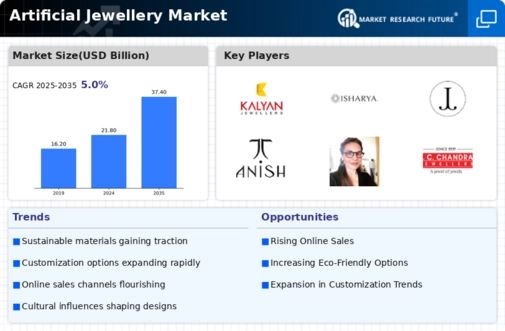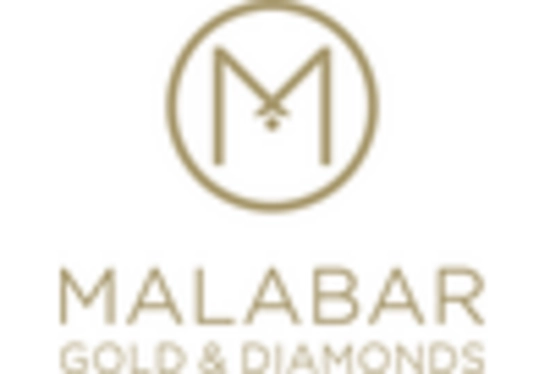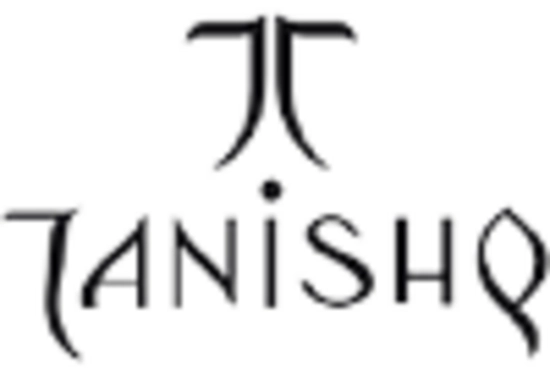Sustainability Trends
The growing emphasis on sustainability is reshaping the Artificial Jewellery Market, as consumers increasingly seek eco-friendly alternatives to traditional jewellery. Many brands are now adopting sustainable practices, such as using recycled materials and ethical sourcing methods, to appeal to environmentally conscious consumers. Recent surveys indicate that nearly 60% of consumers are willing to pay a premium for sustainable products, which has prompted a shift in production strategies within the industry. This trend not only enhances brand loyalty but also attracts a new customer base that prioritizes ethical consumption. As sustainability becomes a core value for many consumers, the Artificial Jewellery Market is likely to see a rise in demand for products that align with these principles, fostering innovation and growth.
Influence of Social Media
The Artificial Jewellery Market is significantly influenced by the rise of social media platforms, which serve as powerful marketing tools for brands and designers. Social media channels, such as Instagram and Pinterest, allow for the rapid dissemination of trends and styles, enabling consumers to discover and purchase artificial jewellery with ease. Data indicates that over 70% of consumers are influenced by social media when making fashion-related purchases. This trend has led to an increase in online sales, with the e-commerce segment of the Artificial Jewellery Market growing at an annual rate of approximately 15%. As influencers and celebrities showcase their jewellery choices online, the demand for unique and trendy artificial pieces continues to rise, further propelling the market forward.
Rising Disposable Incomes
The Artificial Jewellery Market is experiencing a notable surge in demand, primarily driven by rising disposable incomes across various demographics. As consumers find themselves with more financial flexibility, they are increasingly willing to invest in artificial jewellery as a fashionable and affordable alternative to traditional pieces. This trend is particularly evident in emerging markets, where the middle class is expanding rapidly. According to recent data, the disposable income of households in several regions has increased by approximately 5 to 7% annually, leading to a corresponding rise in spending on non-essential items, including artificial jewellery. This shift in consumer behavior suggests that the Artificial Jewellery Market is poised for continued growth as more individuals seek to express their personal style without the financial burden associated with genuine gemstones.
Technological Advancements
Technological advancements are playing a pivotal role in transforming the Artificial Jewellery Market. Innovations in manufacturing processes, such as 3D printing and computer-aided design, are enabling brands to create intricate and high-quality pieces at a lower cost. These technologies not only enhance production efficiency but also allow for greater creativity and design flexibility. Recent reports indicate that the adoption of 3D printing in jewellery manufacturing has increased by over 30% in the last few years, significantly impacting the market landscape. Additionally, the rise of augmented reality (AR) applications is enhancing the online shopping experience, allowing consumers to virtually try on jewellery before making a purchase. As these technological advancements continue to evolve, they are likely to drive further growth and innovation within the Artificial Jewellery Market.
Customization and Personalization
The desire for customization and personalization is becoming a key driver in the Artificial Jewellery Market. Consumers are increasingly looking for unique pieces that reflect their individual tastes and preferences. This trend has led to a rise in brands offering customizable options, allowing customers to select materials, designs, and even engravings. Market data suggests that personalized jewellery sales have increased by approximately 20% over the past year, indicating a strong consumer preference for bespoke items. This shift towards personalization not only enhances customer satisfaction but also fosters a deeper emotional connection between consumers and their jewellery. As the demand for unique and tailored products continues to grow, the Artificial Jewellery Market is likely to expand its offerings to meet these evolving consumer expectations.


















Leave a Comment